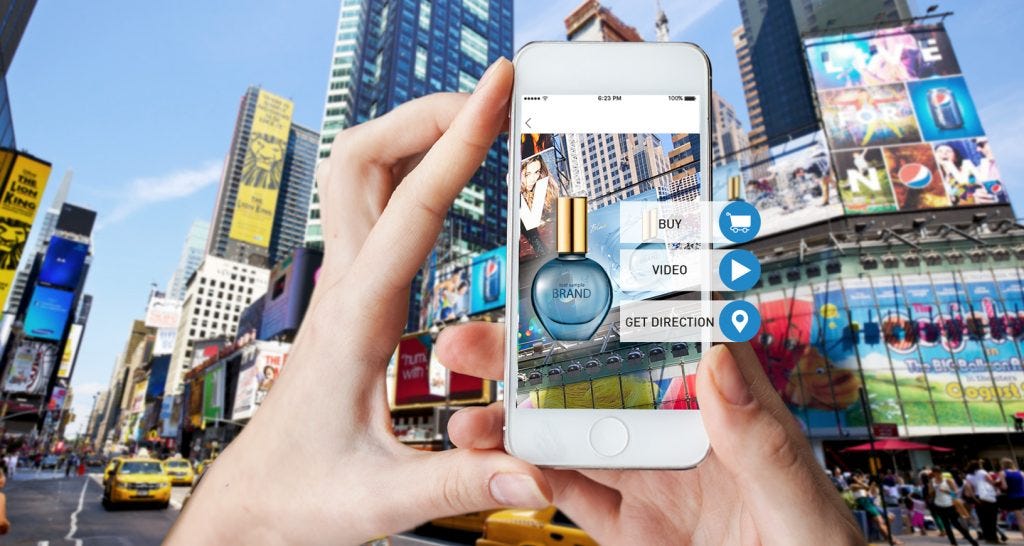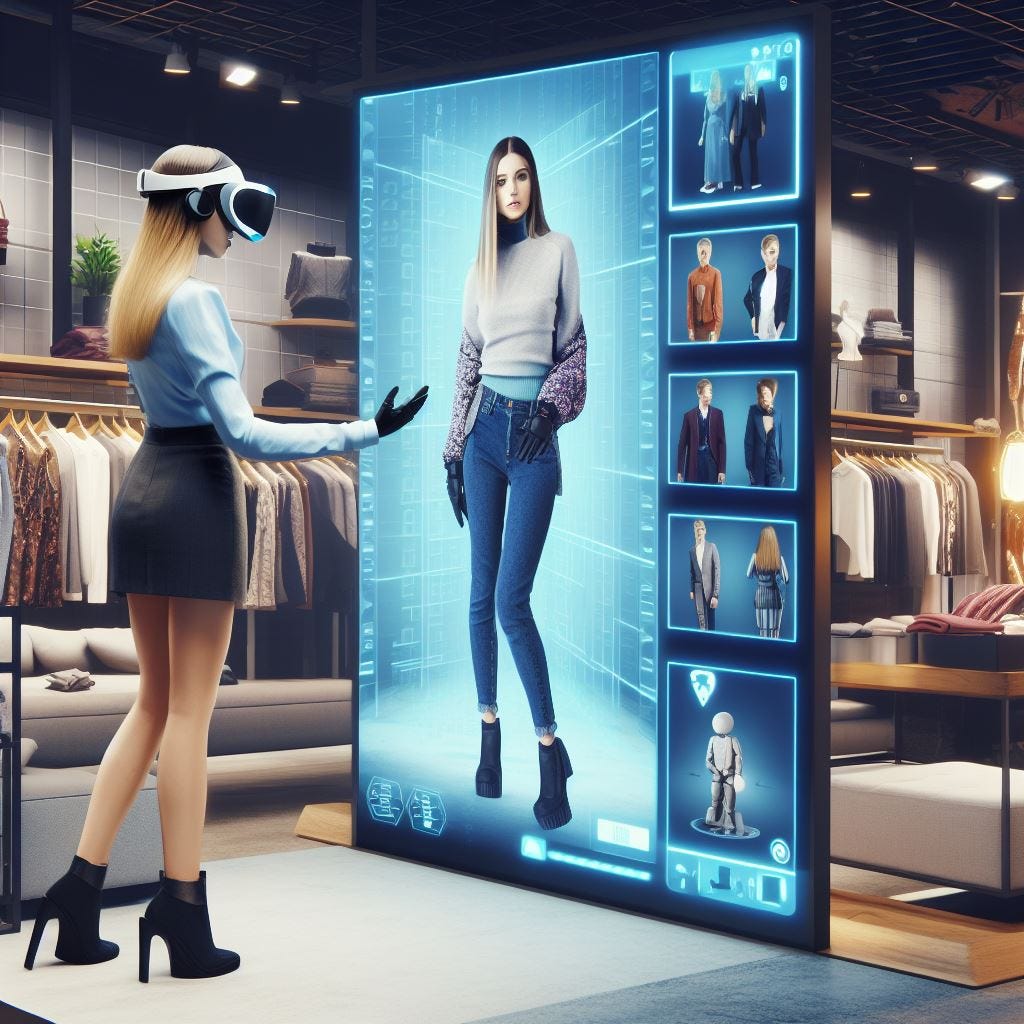Imagine strolling down a bustling city street and being greeted by a playful dragon promoting the latest fantasy novel, or virtually trying on a new pair of shoes before stepping foot in a store. This isn't a scene from a futuristic movie; it's the reality of augmented reality (AR) advertising, and it's poised to revolutionize the way we interact with brands.
AR goes beyond the static billboards and intrusive pop-up ads of the past. It overlays digital elements onto the real world, creating interactive and immersive experiences that capture our attention and leave a lasting impression.
Why AR Ads Are the Future:
Enhanced Interactivity:
Forget passively watching ads. AR lets you engage directly with the content, whether it's scanning a magazine to see a product come to life in 3D or using your phone to virtually place furniture in your room. This interactivity makes ads more memorable and impactful.
Personalized Experiences:
AR ads can be tailored to your individual preferences and behavior. Imagine walking past a store and seeing a personalized ad for a product you've been eyeing online, or receiving a location-based AR coupon for your favorite coffee shop. This level of personalization leads to higher engagement and conversion rates.

Location-Based Marketing:
AR leverages the power of location-based services to deliver targeted messages to users in specific places. Picture walking down a street and seeing AR ads for restaurants or shops nearby, or receiving special offers when you enter a particular store. This targeted approach effectively reaches potential customers when they're most receptive.
Gamification and Storytelling:
AR isn't just about ads; it's about creating engaging experiences that tell stories and build brand loyalty. Imagine participating in an AR scavenger hunt for a local business or following an AR story that unfolds as you walk through a museum. These gamified experiences make advertising fun and memorable, fostering positive brand associations.
Increased Brand Awareness:
AR ads are inherently shareable. Users are more likely to share their unique experiences with friends and family on social media, organically spreading brand awareness and reach.
The Future of AR Advertising:
While still in its early stages, AR advertising has the potential to completely transform the way we interact with brands. As the technology matures and becomes more accessible, we can expect to see even more innovative and immersive AR ad campaigns that capture our attention and leave a lasting impression.
Here are some additional points to consider:
Privacy Concerns: As AR ads become more personalized and location-based, user privacy protection is crucial. Advertisers must be transparent about data collection and usage and give users control over their privacy settings.
Technical Limitations: AR technology is still evolving, with limitations in device compatibility and network bandwidth. Overcoming these limitations will lead to wider adoption of AR advertising.

Ethical Considerations: AR ads can be intrusive if not used responsibly. Advertisers must be mindful of the context and ensure their ads don't create a negative user experience.
Overall, AR advertising is a powerful tool with the potential to revolutionize the way we interact with brands. By understanding the benefits and limitations of this technology and using it responsibly, advertisers can create engaging and effective campaigns that resonate with consumers and shape the future of advertising.
So, keep your eyes peeled for the next wave of AR ads! The future of marketing is looking augmented.
Additional Examples of AR Advertising:
IKEA Place: This app allows users to virtually place furniture in their homes to see how it would look before purchasing.
L'Oreal Makeup Genius: This app lets users virtually try on different makeup looks and shades.
Snapchat Lens Studio: This platform allows brands to create custom AR lenses for users to try on and share.
Pokemon Go: This popular game is a prime example of how AR can be used to create engaging and interactive experiences.
The Main Types of Augmented Reality Advertisements
1. AR e-Commerce
AR enables the customer to experience the product in an immersive way. This makes product demonstration unique and makes the decision-making stage easier.
2. AR Events and Conferences
By using AR in events and conferences, catching the attention of the audience will be an easy task. And we help people create their own AR experiences without writing a single line of code. Check out our blog where we have covered how AR helps in making events and conferences engaging and immersive.
3. AR Product Packaging
By enabling AR into the product packaging, the brand can reach its customers post-purchase and showcase them similar or complementary products. They can also use the opportunity to showcase the history of their brand or the message they need to convey to their audience.
4. AR OOH
The AR-based Out-Of-Home advertisements make the billboards, and posters immersive, engaging, and creates curiosity among the people, and help the brand send their message clearly to the audience with just a simple scan of the QR code.
The Benefits of Bringing AR into Ads
1. Boost Engagement & Sales
2. Higher Conversion Rates
3. Higher Conversion Rates
4. Build Emotional Connection with Audience
5. Creating Memorable Experience for Customers
Leaping into the Future
It is always necessary to understand the trends that can be the future and those that won’t last long. And in the case of augmented reality technology, all the giants in the tech as well as the advertisement sector has already heavily invested in it and is already reaping the benefits from the technology.
For more information contact : support@mindnotix.com
Mindnotix Software Development Company


 AI-Taxi App
AI-Taxi App AI-Food App
AI-Food App AI-Property Mgmt App
AI-Property Mgmt App AI-CRM
AI-CRM AI-Fantasy App
AI-Fantasy App
 Web Development
Web Development App Development
App Development Business & Startup
Business & Startup Hire Developer
Hire Developer
 Digital Marketing
Digital Marketing Lead-generation
Lead-generation Creative Agency
Creative Agency Branding Agency
Branding Agency Augmented Reality
Augmented Reality Virtual Reality
Virtual Reality Internet of Things
Internet of Things Artificial Intelligence
Artificial Intelligence Blockchain
Blockchain Chatbot
Chatbot




